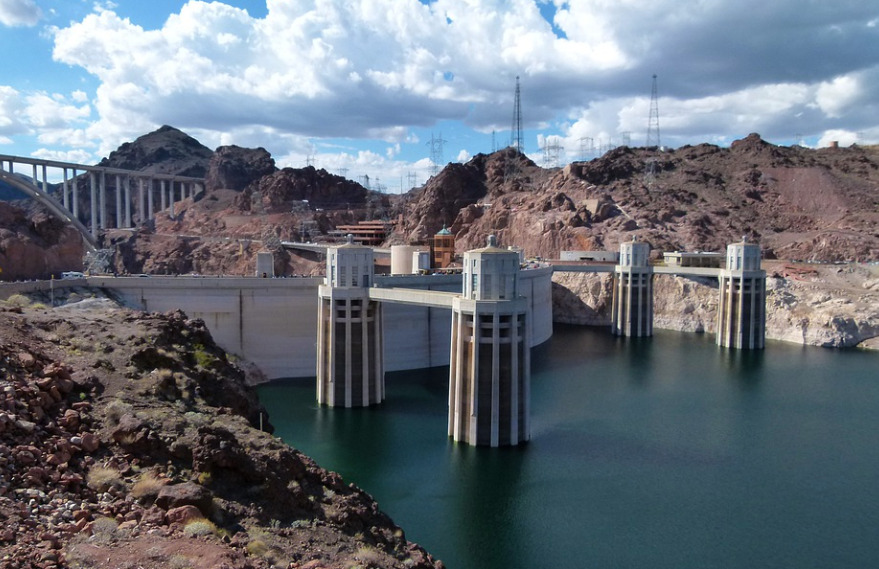
This story was updated on Aug. 16 with news announced by the US Bureau of Reclamation
Arizona and Nevada will face steeper cuts to Colorado River water in 2023 as drought continues to deepen, but California will once again be spared — at least for now.
The US Bureau of Reclamation today announced the first-ever Level 2a shortage condition for Lake Mead, the massive reservoir that supplies water to about 25 million people. That designation triggers more curtailments for Arizona, Nevada and Mexico, while California, which holds more senior rights, is not affected.
But there’s been no deal among the Colorado River basin states to further cut their water use by 2 to 4 million acre feet in 2023. It’s a massive amount — at least seven times more than Nevada is entitled to in a year.
In mid-June, Bureau Commissioner Camille Calimlim Touton gave the states a 60-day deadline to craft a deal, or face federally-mandated cuts instead.
As of today, no agreement had been struck. But the deadline has come and gone with no plan and no concrete consequences from the Bureau of Reclamation.
“To date, the states collectively have not identified and adopted specific actions of sufficient magnitude that would stabilize the system,” Touton said.
The verdict is especially high-stakes for Southern California, where the river provides a quarter or a third of the region’s water supply. Seven Southern California counties rely on the river for water and hydroelectric power, and 600,000 acres of farmland draw on it for irrigation.
“Our region, our economy, our way of life in Southern California depends on the Colorado River,” said Bill Hasencamp, Colorado River resources manager for the giant Metropolitan Water District, which supplies imported water to 19 million people. “It is vitally important.”
But climate change, drought and overallocation have been threatening the Colorado River’s supply for decades, even as the amount consumed and lost through reservoir evaporation regularly outpaces its natural flows.
And now, with Lake Mead and Lake Powell at historically low levels, more needs to be done, Touton warned. “The system is approaching a tipping point. And without action, we cannot protect the system and the millions of Americans who rely on this critical resource,” Touton said today.
What exactly “more” means — and what that means for California — is still an open question. Here’s what to know:
California gets the most of any state
The Colorado River and its tributaries cut through seven U.S. states and Mexico, from the river’s headwaters in Colorado and Wyoming to where it trickles toward — though rarely actually reaches — the Gulf of California.
A century of deals, acts and legal decisions have carved up 15 million acre-feet between Colorado, Wyoming, Utah and New Mexico in the Upper Basin, and California, Arizona and Nevada in the Lower Basin. Native American tribes hold rights to this water as well, and a 1944 treaty set aside another 1.5 million acre feet for Mexico.
The biggest straw, by far, is California’s. The state is entitled to 4.4 million acre-feet, or more than a third of the river’s natural flow. It’s enough water to supply more than 13 million Southern California households for a year. In the Lower Basin, Arizona comes in next with about 2.8 million acre feet.
Most of California’s Colorado River water is used for irrigation. The Imperial Irrigation District gets as much as 3.1 million acre feet a year, mostly supplied to nearly 475,000 acres of farmland and a handful of communities in the southeastern corner of California. Another major recipient is the Metropolitan Water District, which last year diverted roughly 1.1 million acre feet of water from the Colorado River system.
“(For) 81 years now, it’s been the backbone of our supply,” Metropolitan’s Hasencamp said. “Today, on average, about half of our imported water is from the Colorado River.”




